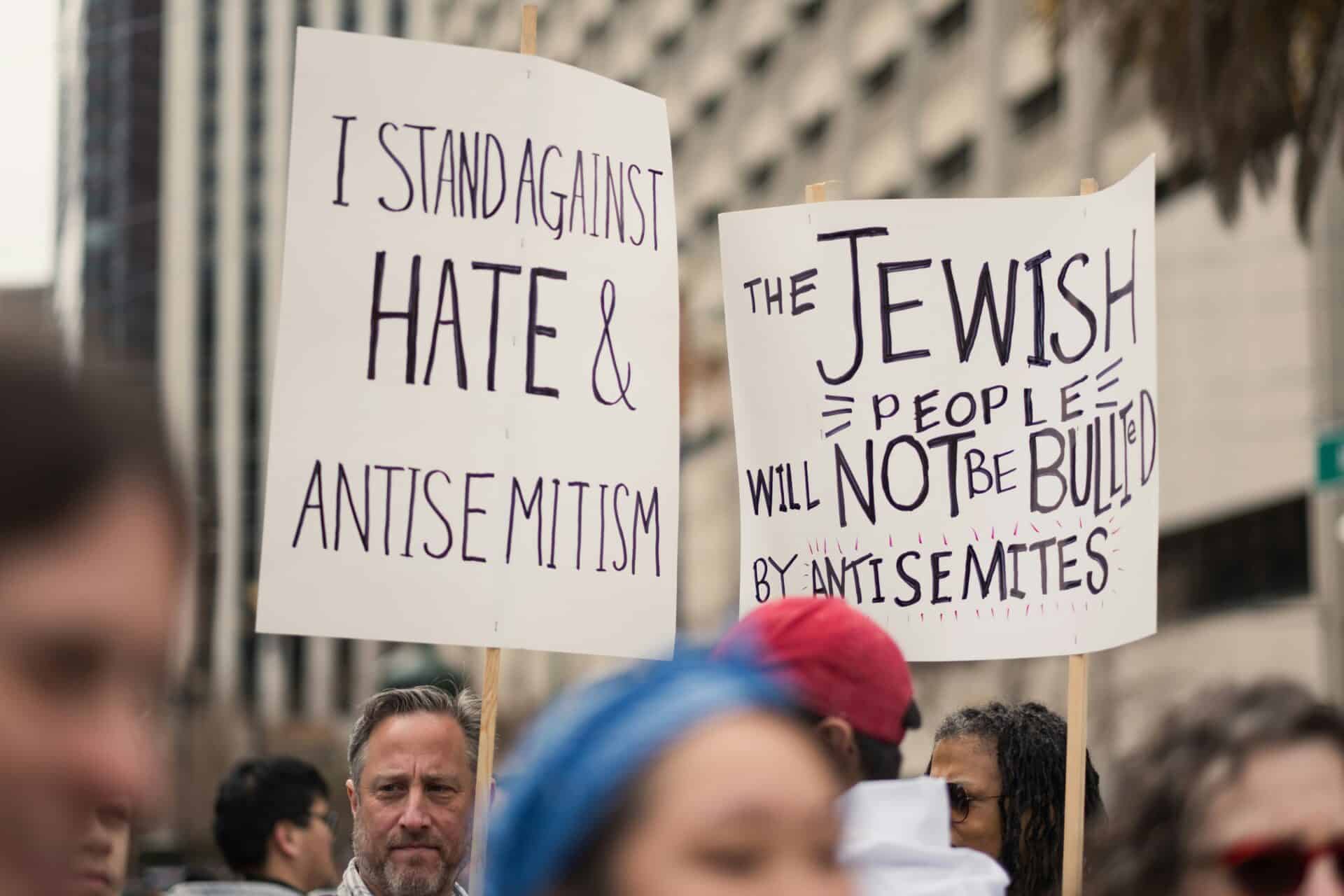Antisemitism changes forms, responds to circumstances, and thrives when left unchecked. But antisemitism doesn’t exist on its own. In times of rising antisemitism, there is usually something more going on. Understanding antisemitism means understanding how different biases overlap, feed off each other, and often stem from the same dark roots.
Hatred knows no boundaries
When a community feels the sting of hate, it’s rarely a lone attack. Antisemitism doesn’t just “appear”, and neither do other types of prejudice. A spike in antisemitic rhetoric often signals a rise in other forms of hate — be it Islamophobia, anti-Black racism, anti-immigrant sentiment, homophobia, or misogyny. All these different expressions of hate have their own characteristics, yet they share common narratives and methods: scapegoating, dehumanization, conspiracy theories, and a need to vilify the “other.”
This overlap isn’t by chance. This is how bigotry works, by dividing, controlling, and silencing. If we are to fight antisemitism effectively, we must recognize how it coexists with other forms of discrimination, respect the victims, and raise awareness of its existence.
Intersectionality and how it impacts marginalized communities
Intersectionality has become a popular term in social justice movements, but let’s break it down to what it really means. It’s about understanding how individuals experience different oppressive systems. For instance, a Jewish woman might face both antisemitism and sexism, and the way these biases interact creates a unique experience. In another example, Jews of color may encounter both antisemitism and racism — one amplifying the other.
But intersectionality isn’t just about individual experiences; it’s about social patterns as well. Hate groups don’t usually confine themselves to one topic. Historically, white supremacist groups aren’t just antisemitic — they’ve also promoted racist ideologies, anti-LGBTQ+ sentiments, and xenophobia. These ideologies all serve the same end: maintaining a sense of power and status. When we talk about antisemitism, we need to zoom out to see how it’s connected to other oppressive beliefs.
How hate groups divide communities to stay in power
One tactic common to different forms of hate is the attempt to create conflict — both within communities and between them. Antisemitic conspiracy theories often portray Jewish people as manipulators behind global affairs. A similar approach is used by anti-immigrant extremists claiming immigrants are a threat to their communities. Ultimately, these narratives divide us and create distrust and fear. Hate thrives when communities feel isolated from one another, when they are made to believe that their struggles are unrelated to each other.
Take the historic theory of “Jews control the media.” It’s a narrative used to create distrust, and resentment of non-Jewish communities against Jews, suggesting that Jews manipulate public opinion in their favor. Now think of the “Great Replacement” conspiracy theory used against immigrants — the belief that there’s an orchestrated effort to replace “native” populations. Both of these ideas rely on a fear of some hidden, evil force pulling the strings, making different groups see each other as enemies rather than allies.
The Cost of ignoring the links between antisemitism and other forms of hate
Ignoring the connection between antisemitism and other forms of hate has consequences. By doing so, we can miss the critical signs of growing intolerance and underestimate bigotry’s power. Antisemitism must not be treated independently of other struggles or we could lose important allies. The truth is, we are stronger when we recognize the shared challenges we share and support of one another.
Consider social media. When antisemitic content spreads unchecked on platforms, it paves the way for other hateful narratives. Algorithms designed to promote engagement end up amplifying frustration, controversy, and fear. When we fight antisemitism online, we also push back against hatred and misinformation that threatens vulnerable groups everywhere. When we see the big picture, we can build alliances and talk in one voice against hate.
Understanding the intersection of antisemitism and other forms of hate isn’t just an academic exercise—it’s an essential part of building a just society. When we acknowledge that antisemitism is linked to racism and other biases, the big picture unfolds. This allows us to develop strategies that fight not just the symptoms but the root causes of hate. At Fighting Online Antisemitism (FOA), we work to expose and combat antisemitic content online, which often overlaps with other harmful narratives like racism, xenophobia, and misinformation. By addressing the roots of online hate, we aim to protect vulnerable communities and create safer digital spaces for all.
But we can’t do it alone. Join us in the fight against antisemitism and hate. You can report hateful content, join one of our free workshops, or volunteer to make a difference.
Remember, hate feeds on fear and isolation– by standing together, we can counter it.
